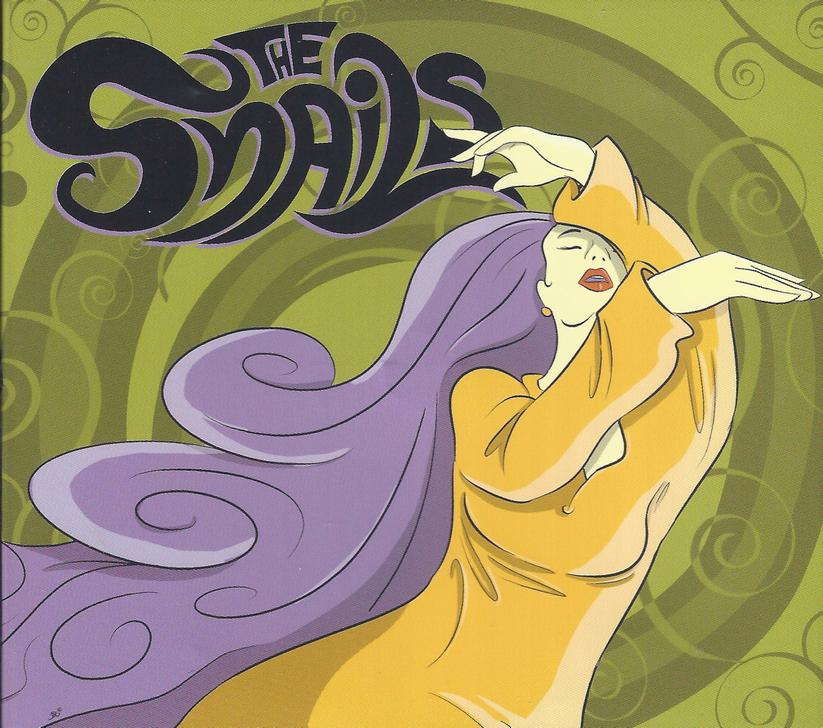 Greece and Italy (or the Mediterraenean in general) seems to be a hotbed for Freakbeat / Garage revival bands since the wave was started by The Fuzztones and The Cynics and a few other US acts who also have toured that part of the world extensively since the early 80’s, and are very popular down there. So what we have is a genre, which in my younger LSD trippin’ art student days, was a favorite of mine, owning The Fuzztones Lysergic Emanations CD, a handful of Bevis Frond CDs (all this bought at the Wild Mind shop in Oslo, R.I.P.) and several “Nuggets” comps (I now have many of the expanded box sets). In the late 80s I was a big fan of The Doors as well. All personal history aside, I’ll get to the point: if you like listening to the same stuff over and over, the snarling vocals, the fuzz guitars, the Farfisa organ, fine, then these two Greek-beat (a new genre?) platters are for you. You probably have all 12″ and 10″ and 7″‘es by The Fuzztones already stashed away with your incense holder, lava lamp, etc., somewhere from last time you had a session at the turntable.
Greece and Italy (or the Mediterraenean in general) seems to be a hotbed for Freakbeat / Garage revival bands since the wave was started by The Fuzztones and The Cynics and a few other US acts who also have toured that part of the world extensively since the early 80’s, and are very popular down there. So what we have is a genre, which in my younger LSD trippin’ art student days, was a favorite of mine, owning The Fuzztones Lysergic Emanations CD, a handful of Bevis Frond CDs (all this bought at the Wild Mind shop in Oslo, R.I.P.) and several “Nuggets” comps (I now have many of the expanded box sets). In the late 80s I was a big fan of The Doors as well. All personal history aside, I’ll get to the point: if you like listening to the same stuff over and over, the snarling vocals, the fuzz guitars, the Farfisa organ, fine, then these two Greek-beat (a new genre?) platters are for you. You probably have all 12″ and 10″ and 7″‘es by The Fuzztones already stashed away with your incense holder, lava lamp, etc., somewhere from last time you had a session at the turntable.
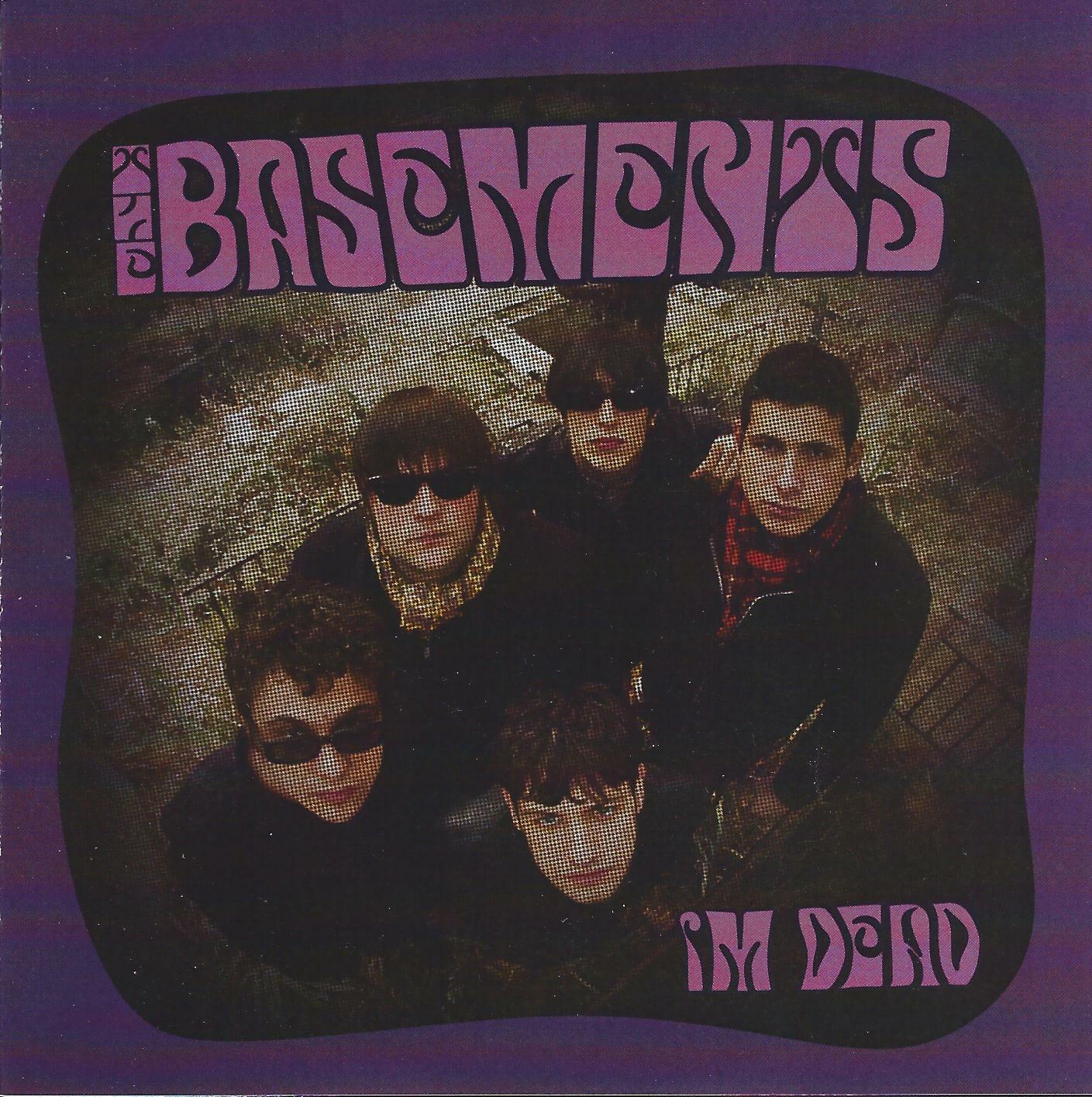 Don’t get me wrong, I adore the 60’s stuff, the innocence of the era (at least the innocent part these bands try to recapture), I have just “moved on”. I sometimes play LA Woman by The Doors, dig out a Yardbirds or Who album or skip through a “Best of The Small Faces” for old time’s sake, delve into bands from the 60’s on occasion, sometimes a quick scan thru of my expensive “Nuggets” boxes once in a blue moon. But doing all this over again, reviving it, it’s fun but it cannot be a valid lifestyle unless you are totally dedicated only to Freakbeat or Garage, which I am not, I am afraid. I love Third Bardo’s I’m Five Years Ahead of My Time and The Snails do it justice. There’s loads of great harmonies to be found on the Basements CD, it’s all nicely done. But revivalism of this genre in 2013 is best left to the original 80’s wave of bands. Its not bad at all, if you dig the Fuzztones in a hardcore way, please do pick up these two CDs, you’ll think they are fuckin’ great. But if you, like me, feel like the 60’s were more than just Strawberry Alarm Clock or The Seeds and frankly, burned out on drugs and Nuggets albums by the time you were 25, explored new worlds, maybe went a little insane on harder drugs and evolved into a reptile-like humanoid, and found you preferred other genres than 60’s revivalism, don’t bother. To me, who likes all kinds of rock music made between 1962-2013, I feel a kinship to the Freakbeat and Garage revival, though I let it be an obscure part of my musical hereditary makeup, although these bands are both very good at what they do… But it’s just not my cuppa… so to speak. Onward to Fuzz!
Don’t get me wrong, I adore the 60’s stuff, the innocence of the era (at least the innocent part these bands try to recapture), I have just “moved on”. I sometimes play LA Woman by The Doors, dig out a Yardbirds or Who album or skip through a “Best of The Small Faces” for old time’s sake, delve into bands from the 60’s on occasion, sometimes a quick scan thru of my expensive “Nuggets” boxes once in a blue moon. But doing all this over again, reviving it, it’s fun but it cannot be a valid lifestyle unless you are totally dedicated only to Freakbeat or Garage, which I am not, I am afraid. I love Third Bardo’s I’m Five Years Ahead of My Time and The Snails do it justice. There’s loads of great harmonies to be found on the Basements CD, it’s all nicely done. But revivalism of this genre in 2013 is best left to the original 80’s wave of bands. Its not bad at all, if you dig the Fuzztones in a hardcore way, please do pick up these two CDs, you’ll think they are fuckin’ great. But if you, like me, feel like the 60’s were more than just Strawberry Alarm Clock or The Seeds and frankly, burned out on drugs and Nuggets albums by the time you were 25, explored new worlds, maybe went a little insane on harder drugs and evolved into a reptile-like humanoid, and found you preferred other genres than 60’s revivalism, don’t bother. To me, who likes all kinds of rock music made between 1962-2013, I feel a kinship to the Freakbeat and Garage revival, though I let it be an obscure part of my musical hereditary makeup, although these bands are both very good at what they do… But it’s just not my cuppa… so to speak. Onward to Fuzz!
For more information on The Snails visit http://www.thesnails.gr
For more information on The Basements visit http://www.myspace.com/thebasementsthess
Reviewed by Christian Eric Mumford

 The Lost Art Of Twilight is the second album from Belgrade, Serbia based Temple Of The Smoke, the follow-up to their 2011 debut, Against Human Race. That album was a powerhouse set of heavy space rock (my favorite being the blistering Illudium Q-36 Explosive Space Modulator), psychedelic reggae, stoner rock, and mellow psych rock.
The Lost Art Of Twilight is the second album from Belgrade, Serbia based Temple Of The Smoke, the follow-up to their 2011 debut, Against Human Race. That album was a powerhouse set of heavy space rock (my favorite being the blistering Illudium Q-36 Explosive Space Modulator), psychedelic reggae, stoner rock, and mellow psych rock. Unprotected is the latest album from Athens, Greece based No Man’s Land, and is the follow-up to their 2010 released The Drowning Desert. The band are the quintet of Vassilis Bas Athanassisdes on guitars and vocals, Chris Silver Triantafillopolous on drums, Nick Petavrides on bass, George Pavlis on trumpet and fluegelhorn, and George Sirganides on flute, plus guests on percussion and cello.
Unprotected is the latest album from Athens, Greece based No Man’s Land, and is the follow-up to their 2010 released The Drowning Desert. The band are the quintet of Vassilis Bas Athanassisdes on guitars and vocals, Chris Silver Triantafillopolous on drums, Nick Petavrides on bass, George Pavlis on trumpet and fluegelhorn, and George Sirganides on flute, plus guests on percussion and cello. Y’know the feeling you got first time you heard, as a spotty stoned teenager, In Search Of Space or Chronicle of The Black Sword on your first introduction to Hawkwind after a phase of cassettes with Ramones and Sex Pistols and punk in the mid 80’s right at the tail end of the 80’s when Nordic bands like DarXtar and Dark Sun were still about jamming Hawkwind style dark space punk just about to release demo cassettes? Well that’s what Hazard Wings Interstellar Torment CD is like… the first DarXtar LP, the first Dark Sun demo cassette, etc. Its superfabulous, it is what I loved about Hawkwind and their followers in the Arctic North from the get-go, the “Chronicles” metal darkness punk, bands like Full Moon (the UK one), old issues of Ptolemaic Terrascope from the late 80s, Monster Magnet’s first few EPs and Spine of God album; just that raw, 80’s, Hawkwindness. Call it post-80’s, but these guys had never heard of anything but dark underground, but I swear it was punk enough to be 80’s, with a morbid fascination for Venom and early Bathory to boot; maybe Candlemass in an imaginary world. It was Dark, it was Space, and YOU, STONED YOUNG ANGEL-WITCH was trying to cast counter Enchantments with your runes and your Jim Morrison poster. At least that is what I did. And I had Rodney Matthews posters and 2000 AD and Eclipse and Pacific comics in a pile.
Y’know the feeling you got first time you heard, as a spotty stoned teenager, In Search Of Space or Chronicle of The Black Sword on your first introduction to Hawkwind after a phase of cassettes with Ramones and Sex Pistols and punk in the mid 80’s right at the tail end of the 80’s when Nordic bands like DarXtar and Dark Sun were still about jamming Hawkwind style dark space punk just about to release demo cassettes? Well that’s what Hazard Wings Interstellar Torment CD is like… the first DarXtar LP, the first Dark Sun demo cassette, etc. Its superfabulous, it is what I loved about Hawkwind and their followers in the Arctic North from the get-go, the “Chronicles” metal darkness punk, bands like Full Moon (the UK one), old issues of Ptolemaic Terrascope from the late 80s, Monster Magnet’s first few EPs and Spine of God album; just that raw, 80’s, Hawkwindness. Call it post-80’s, but these guys had never heard of anything but dark underground, but I swear it was punk enough to be 80’s, with a morbid fascination for Venom and early Bathory to boot; maybe Candlemass in an imaginary world. It was Dark, it was Space, and YOU, STONED YOUNG ANGEL-WITCH was trying to cast counter Enchantments with your runes and your Jim Morrison poster. At least that is what I did. And I had Rodney Matthews posters and 2000 AD and Eclipse and Pacific comics in a pile.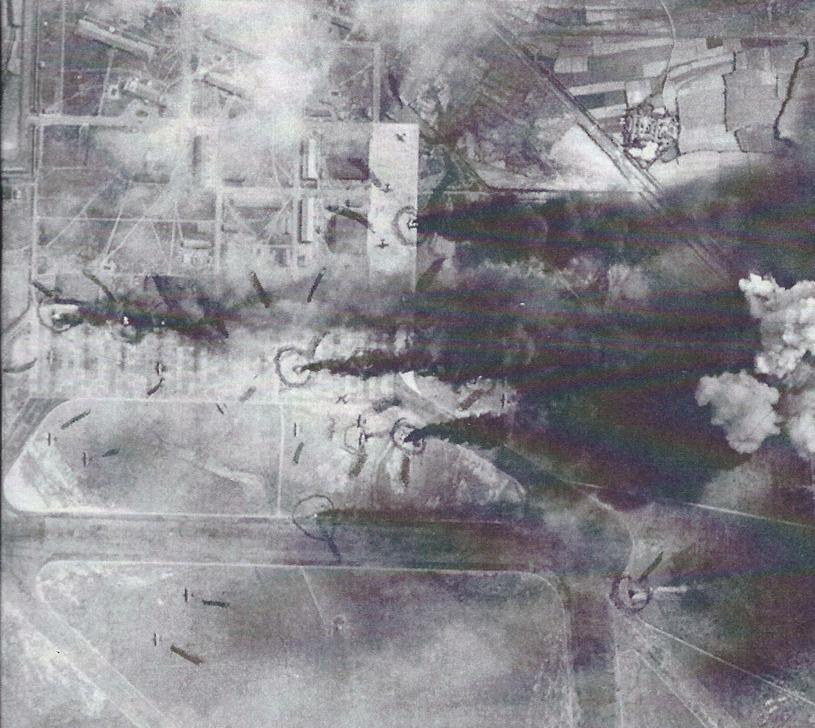 This CD was recorded live at Loppen, Christiania in Copenhagen, Denmark 2011. It has four tracks, all of which are totally instrumental, lasting around 40 minutes.
This CD was recorded live at Loppen, Christiania in Copenhagen, Denmark 2011. It has four tracks, all of which are totally instrumental, lasting around 40 minutes.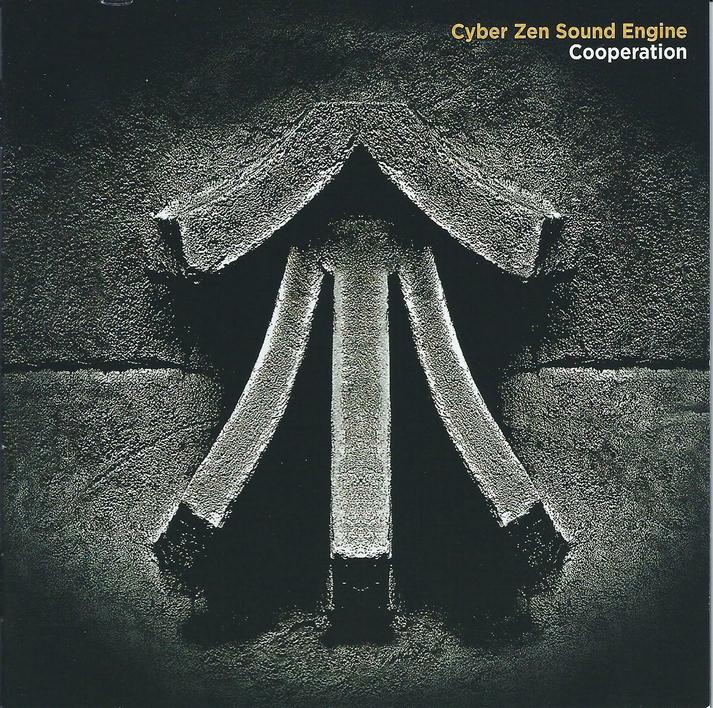 Cooperation is the 4th album to date by Cyber Zen Sound Engine, and not having heard any of their other albums, I will jump straight in and be as honest as I can be.
Cooperation is the 4th album to date by Cyber Zen Sound Engine, and not having heard any of their other albums, I will jump straight in and be as honest as I can be. Imagine if you will, a world where all life forms bow before The GREAT RAVING ALTAR OF TECHNO. Where the eternal holy thud thud thud thud thud thud thud ascends all matter frequentially towards that pinnacle of ecstasy some call God.
Imagine if you will, a world where all life forms bow before The GREAT RAVING ALTAR OF TECHNO. Where the eternal holy thud thud thud thud thud thud thud ascends all matter frequentially towards that pinnacle of ecstasy some call God.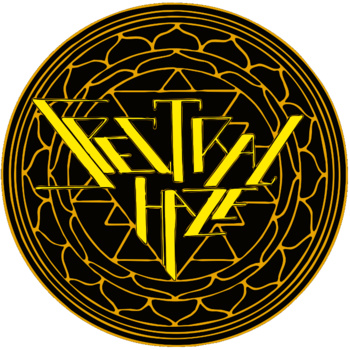 Spectral Haze hail from Oslo, Norway, and have four members. This band appears to be a supergroup of sorts, with members previously doing stints in Purple Hill Witch, High Priest Of Saturn and Resonaut. A cursory glance at their Facebook page shows images of blissed out guys wielding Gibson guitars and Rickenbacker basses in time honoured tradition, yet the band touch on some distinctly new musical ideas throughout their work here.
Spectral Haze hail from Oslo, Norway, and have four members. This band appears to be a supergroup of sorts, with members previously doing stints in Purple Hill Witch, High Priest Of Saturn and Resonaut. A cursory glance at their Facebook page shows images of blissed out guys wielding Gibson guitars and Rickenbacker basses in time honoured tradition, yet the band touch on some distinctly new musical ideas throughout their work here. “It is the job of the progressive artist to propose an alternative reality, and preferably one in which all notions of common sense have been completely eradicated. This collection is our proposal.” So states the opening lines of the promo sheet that came with this double CD. This massive project (around 150 minutes of music) is the work of long-time associates Martin Archer (organ, electric piano, laptop, saxophones and bass clarinet) and Chris Bywater (organ, synthesizers, laptop, acoustic and electronic percussion and electric violin), with the help of Steve Dinsdale (drums, percussion and synthesizer), Walt Shaw (percussion and electronics) and Terry Todd (bass guitar). That’s just the core band. Orchestra of the Upper Atmosphere earns the “Orchestra” part of their name by rounding out their sound with a string quartet and wind and voice ensembles. Up to some 30 musicians appear on the album.
“It is the job of the progressive artist to propose an alternative reality, and preferably one in which all notions of common sense have been completely eradicated. This collection is our proposal.” So states the opening lines of the promo sheet that came with this double CD. This massive project (around 150 minutes of music) is the work of long-time associates Martin Archer (organ, electric piano, laptop, saxophones and bass clarinet) and Chris Bywater (organ, synthesizers, laptop, acoustic and electronic percussion and electric violin), with the help of Steve Dinsdale (drums, percussion and synthesizer), Walt Shaw (percussion and electronics) and Terry Todd (bass guitar). That’s just the core band. Orchestra of the Upper Atmosphere earns the “Orchestra” part of their name by rounding out their sound with a string quartet and wind and voice ensembles. Up to some 30 musicians appear on the album.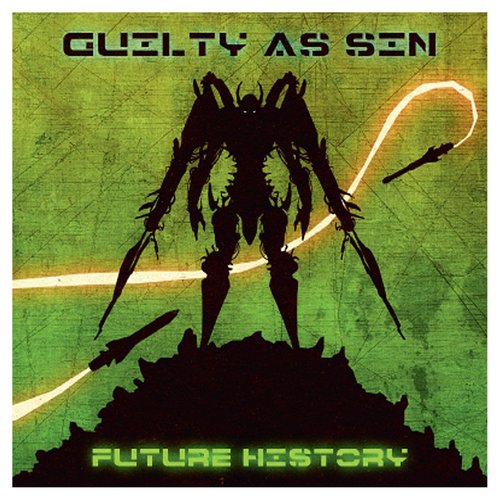 US band Guilty As Sin could best be described as progressive death metal, and death metal itself has been described in author Nigel Latta’s “Politically Incorrect Guide To Teenagers” book as being like a wall of distortion and screaming: “If you took Beethoven, covered him in metal bolts, fed him into a jet engine, and then revved the whole thing up, you would get some idea of how death metal sounds!” Like it or hate it, that is probably a fairly accurate description of that musical genure, and many of the tracks on Future History do indeed bring to mind Beethoven, bolts and jet engines to mind. However, as was the case with 2011’s Psychotronic, Guilty As Sin have chosen to temper their distortion and screams with a dash of progressive rock, which may be appreciated by Aural Innovations readers who make it past the first few tracks.
US band Guilty As Sin could best be described as progressive death metal, and death metal itself has been described in author Nigel Latta’s “Politically Incorrect Guide To Teenagers” book as being like a wall of distortion and screaming: “If you took Beethoven, covered him in metal bolts, fed him into a jet engine, and then revved the whole thing up, you would get some idea of how death metal sounds!” Like it or hate it, that is probably a fairly accurate description of that musical genure, and many of the tracks on Future History do indeed bring to mind Beethoven, bolts and jet engines to mind. However, as was the case with 2011’s Psychotronic, Guilty As Sin have chosen to temper their distortion and screams with a dash of progressive rock, which may be appreciated by Aural Innovations readers who make it past the first few tracks.